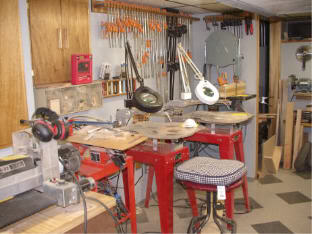PenMan1
Member
I was able to get one of the Rigid 14 inch bandsaws on sale at HD for $187. I have tuned it up with urathane tires, Woodslicer blade, Olsen Cool Blocks, and Kreig Miter fence. I also balanced the wheels, made a mobile custom cabinet and added a motor mount.
The saw runs great, but could use more power for big resaw jobs. The motor is a 3/4 HP, 5/8 arbor, on a 56 frame and runs at 1800 rpms. I have a chance to buy a 2 NEW 2 HP motor for cheap, cheap. It is a 5/8 arbor, 56 frame and runs at 1750 -1800 rpms.
Will this improve my saw? Since I already have the adjustable 56 motor frame, is this change out a big deal? Bottom line, is it worth the $75 for the new motor?
The saw runs great, but could use more power for big resaw jobs. The motor is a 3/4 HP, 5/8 arbor, on a 56 frame and runs at 1800 rpms. I have a chance to buy a 2 NEW 2 HP motor for cheap, cheap. It is a 5/8 arbor, 56 frame and runs at 1750 -1800 rpms.
Will this improve my saw? Since I already have the adjustable 56 motor frame, is this change out a big deal? Bottom line, is it worth the $75 for the new motor?

